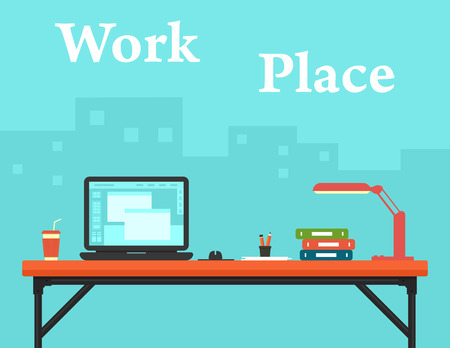Introduction: The Power of Visualization in Career Planning
In today’s fast-paced and competitive American workplace, professionals are constantly seeking effective strategies to set themselves apart and achieve their career goals. One approach that has gained significant traction is the use of visual tools such as vision boards, career maps, and other visualization methods. These tools are not just trendy office decor—they serve a practical purpose by helping individuals clarify their ambitions, map out tangible steps, and stay motivated throughout their professional journey. Visualizing success resonates deeply with American professionals because it transforms abstract aspirations into concrete images and actionable plans. This process taps into both creativity and logic, making it easier to track progress, adapt to change, and stay focused on long-term objectives. Whether you’re aiming for a promotion, considering a career switch, or simply seeking more fulfillment at work, integrating visual tools into your planning process can unlock new levels of motivation, clarity, and real-world results.
2. Vision Boards: Harnessing Creativity for Professional Goals
Vision boards are a powerful tool for visualizing and achieving professional success. By compiling images, quotes, and keywords that represent your career aspirations, you can create a tangible reminder of your goals. There are two main approaches to building vision boards: physical and digital.
Physical Vision Boards
To make a physical vision board, gather magazines, newspapers, scissors, glue, and a poster board or corkboard. Cut out images and words that resonate with your career ambitions—think of job titles, workplace environments, or skills you want to develop. Arrange these items on the board in a way that feels inspiring and motivating. Place your finished board somewhere visible to keep your goals top-of-mind every day.
Digital Vision Boards
For those who prefer a tech-savvy approach, digital vision boards offer flexibility and convenience. Use online platforms like Canva, Pinterest, or Trello to curate images and motivational phrases related to your professional objectives. Digital boards can be updated easily as your goals evolve and can be accessed from any device for daily motivation.
Comparison of Physical vs. Digital Vision Boards
| Aspect | Physical Vision Board | Digital Vision Board |
|---|---|---|
| Accessibility | Requires physical presence | Available on multiple devices |
| Customization | Tactile and hands-on | Easily editable and shareable |
| Materials Needed | Magazines, glue, poster board | Computer or smartphone, internet access |
Setting and Tracking Career Objectives with Vision Boards
A vision board is not just for inspiration—it’s also a practical tool for setting and tracking progress toward career milestones. Start by identifying specific objectives such as gaining a certification, landing a new role, or building a professional network. Represent each goal visually on your board. Regularly review your vision board to assess progress and update it as you achieve goals or set new ones. This ongoing process keeps you accountable and focused on long-term success.

3. Career Maps: Mapping the Path to Your Dream Job
Career mapping is a practical tool for anyone aiming to achieve professional success in the American workforce. Unlike vision boards, which focus on inspiration and big-picture goals, career maps break down your journey into actionable steps. The process begins with identifying your ultimate career destination—your dream job or long-term role. From there, you chart a realistic pathway by outlining the necessary skills, experiences, certifications, and educational milestones required along the way.
Step-by-Step Strategies for Career Mapping
The first step is self-assessment: evaluate your current skills, interests, and values to make sure your career direction aligns with what motivates you. Next, research your desired roles using reliable sources such as LinkedIn profiles, company websites, or informational interviews with professionals in your field. Identify any gaps between where you are now and where you want to be. Then, set clear short-term and long-term goals—for example, gaining proficiency in a new software program or completing a relevant certification within six months.
Setting Milestones and Tracking Progress
Milestone setting is crucial in keeping yourself accountable and motivated. Break larger goals into smaller, manageable tasks that you can accomplish weekly or monthly. For instance, if your aim is to become a project manager, start by mastering project management tools like Asana or Trello, then seek out leadership opportunities at work or through volunteer projects. Mark each achievement on your career map so you can visually track progress and celebrate small wins along the way.
Staying Flexible in a Changing Job Market
The U.S. job market evolves rapidly due to technological advances and shifting industry demands. Successful career mapping requires flexibility; periodically review your map and adjust as needed. Stay informed about emerging trends by following industry news, joining professional associations, and networking at local events or online communities. Be prepared to pivot—whether it’s learning new digital skills or considering alternative career paths—so that your plan remains relevant and attainable no matter how the landscape changes.
4. Digital Tools and Apps: Tech Solutions for Career Visualization
As technology continues to shape the way Americans plan their professional journeys, digital tools and apps have become indispensable for those looking to visualize and track their career goals. Unlike traditional paper-based vision boards or hand-drawn maps, digital solutions offer flexibility, accessibility, and integration with other productivity tools. Below is an overview of some of the most popular U.S.-based platforms that support career mapping and vision boarding, along with their standout features and practical applications.
| Platform/App | Main Features | Practical Use |
|---|---|---|
| Trello | Customizable boards, lists, and cards; drag-and-drop interface; integration with calendars and reminders | Ideal for breaking down long-term goals into actionable steps, tracking progress on specific career milestones, and collaborating with mentors or peers |
| Mural | Virtual whiteboards; sticky notes; templates for mind-mapping and brainstorming; team collaboration tools | Useful for visually organizing ideas, setting career objectives, and developing strategic action plans in group settings |
| Canva | Templates for vision boards; easy-to-use graphic design tools; multimedia integration (images, text, video) | Great for creating visually engaging vision boards that combine inspiration with concrete career ambitions—easy to update as goals evolve |
| PathSource | Career exploration resources; personalized career path mapping; video interviews with professionals in various fields | Helps users explore new professions, assess fit based on interests and values, and map out required steps toward chosen careers |
| Miro | Collaborative online whiteboard; templates for journey mapping; real-time feedback features | Empowers individuals or groups to brainstorm career paths, set priorities, and visualize complex professional roadmaps interactively |
How These Tools Fit American Work Culture
The popularity of these platforms reflects key aspects of U.S. work culture: a preference for goal-oriented planning, collaborative problem-solving, and tech-driven efficiency. Trello and Mural are often used by both individuals and teams in industries from tech startups to education. Canva’s accessibility supports both students building early-career visions and seasoned professionals refreshing their goals. PathSource is especially helpful for recent graduates or mid-career changers exploring new opportunities. Finally, Miro’s emphasis on teamwork aligns well with the growing trend of remote work and distributed teams across the United States.
Choosing the Right Tool for Your Needs
Selecting the best platform depends on your specific objectives: Are you visualizing your personal aspirations? Mapping out a multi-year professional plan? Collaborating with others? Each tool has unique strengths—experimenting with one or more can help you find the right fit for your style and ambitions. By leveraging these digital resources, Americans can make their visions of professional success more tangible, measurable, and achievable.
5. Integrating Visualization into Your Daily Routine
Making visualization a consistent part of your work life doesn’t have to be complicated. By weaving techniques like vision boards, career maps, and other visual tools into your daily habits, you can keep your professional goals front and center. Here’s how you can make visualization a natural and powerful component of your career journey.
Start Your Day with Intentional Focus
Begin each morning by reviewing your vision board or career map for a few minutes. This daily ritual helps set a positive tone and reminds you of what you’re working toward. Take note of specific images or milestones that resonate most with you, and use them as motivation throughout the day.
Incorporate Micro-Visualization Sessions
You don’t need an hour to benefit from visualization. Schedule short, 2-5 minute sessions during breaks or after meetings to quickly revisit your goals. Close your eyes and picture yourself achieving a current objective—whether it’s nailing a big presentation or reaching a new sales target. These micro-sessions reinforce confidence and clarity.
Keep Visual Cues Within Arm’s Reach
Place mini vision boards, sticky notes with affirmations, or printed sections of your career map on your desk, monitor, or even inside your planner. These cues serve as everyday reminders to stay aligned with your long-term aspirations, especially when work gets hectic.
Use Visualization for Problem Solving
When facing challenges, visualize potential solutions before acting. Imagine yourself navigating obstacles successfully; this mental rehearsal can reduce anxiety and improve decision-making. Over time, this habit strengthens your resilience and adaptability in the workplace.
Make Weekly Reflection Non-Negotiable
Set aside 10-15 minutes at the end of each week to update your visual tools based on progress made or shifts in priorities. Treat this check-in as essential as any other meeting—it keeps your career planning dynamic and responsive to real-world changes.
Share and Celebrate Progress
If comfortable, share parts of your vision board or career map with a trusted mentor or colleague. Discussing your goals not only builds accountability but also invites valuable feedback and encouragement. Celebrate small wins by marking them visually—this reinforces momentum and makes success feel tangible.
By embedding these visualization practices into daily routines, career planning becomes an ongoing habit rather than a once-a-year event. Over time, this approach creates sustained motivation and clearer pathways toward professional achievement.
6. Real-Life Success Stories: American Professionals Who Visualized Their Way Forward
Across the United States, many professionals credit their career growth to visual planning tools like vision boards and career maps. For example, Jessica, a marketing manager from Seattle, crafted a detailed vision board with specific goals: landing a director position, leading a campaign for a tech giant, and balancing work-life commitments. By placing this board in her home office, Jessica was reminded daily of her aspirations. Within two years, she had achieved each milestone, attributing her progress to the clarity and motivation provided by visualizing her targets.
Similarly, Marcus, an IT specialist from Atlanta, utilized a career map to plot his path from technical support to cybersecurity management. He broke down the steps—certifications, networking events, and key projects—on a large wall chart. Each time he accomplished a step, Marcus marked it with a sticker, turning his advancement into a tangible process. This approach kept him focused and accountable, resulting in his promotion ahead of schedule.
These stories are echoed in corporate America as well. Amy, an HR leader at a Fortune 500 company in Chicago, introduced team-based vision boarding during annual goal-setting retreats. Her colleagues reported higher engagement and clearer alignment with company objectives after visually mapping both personal and departmental ambitions.
Whether working individually or as part of a group, these U.S. professionals found that visual tools offered more than inspiration—they provided structure and ongoing motivation. By translating abstract ambitions into concrete images and roadmaps, they were able to track progress, celebrate small wins, and maintain momentum even when challenges arose. These real-world examples underscore how integrating vision boards and career maps can transform professional dreams into actionable achievements.


